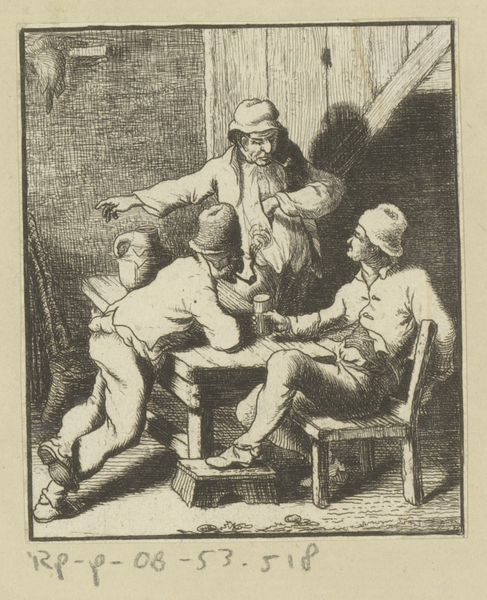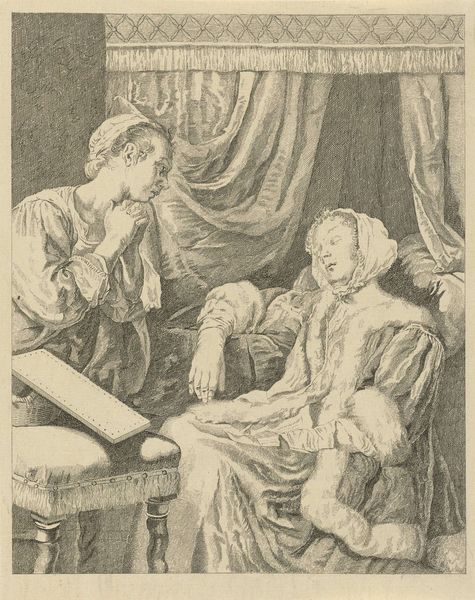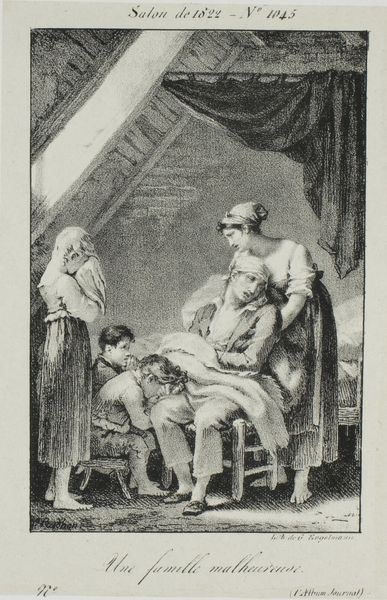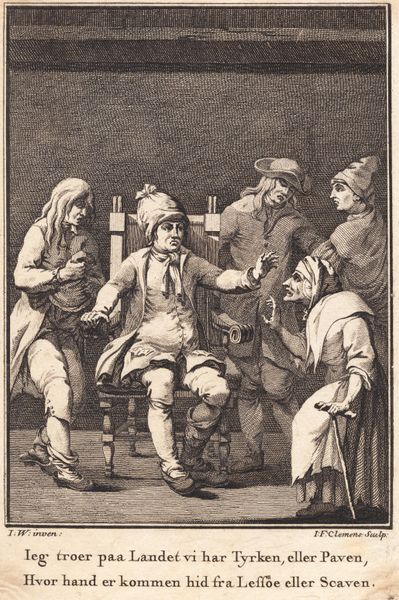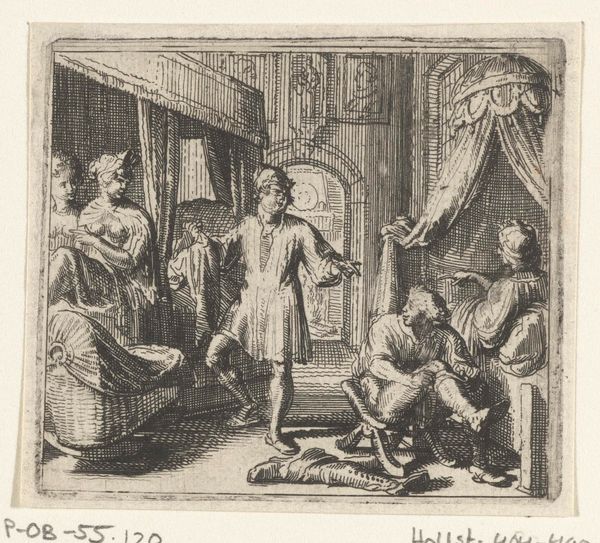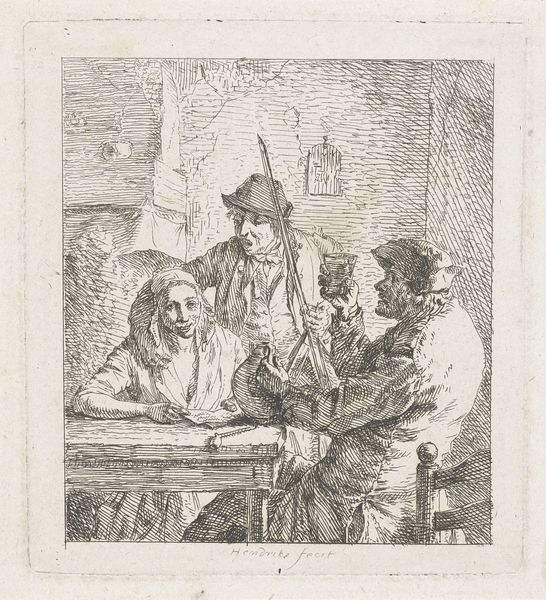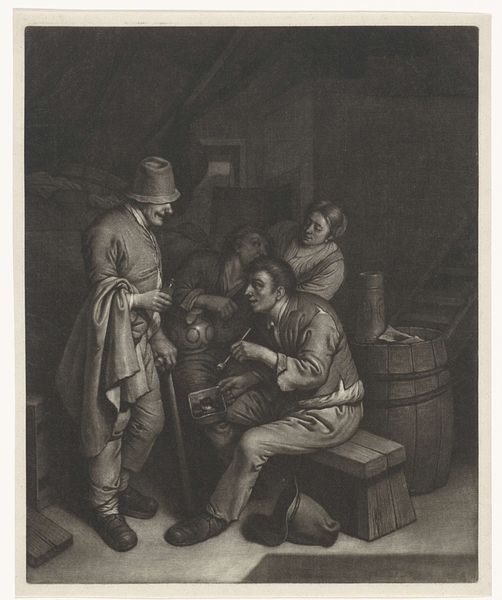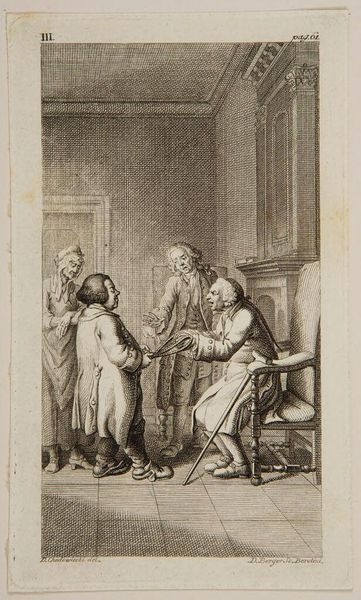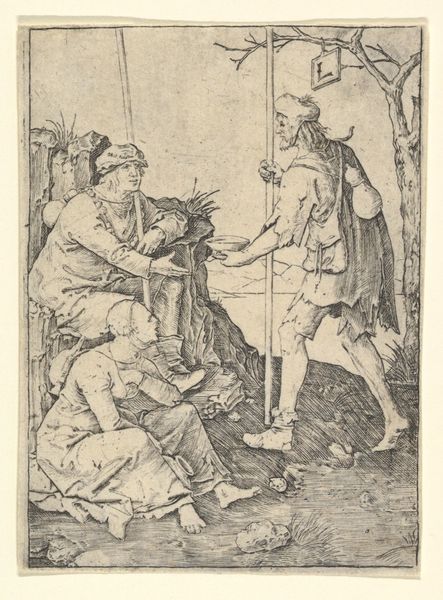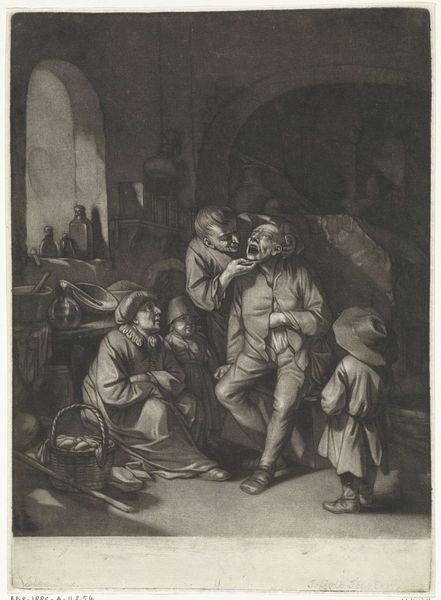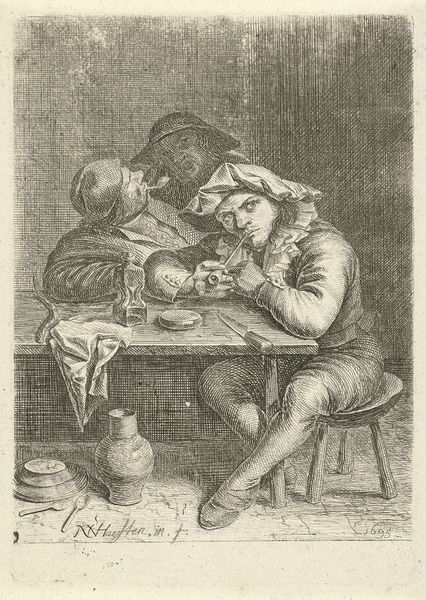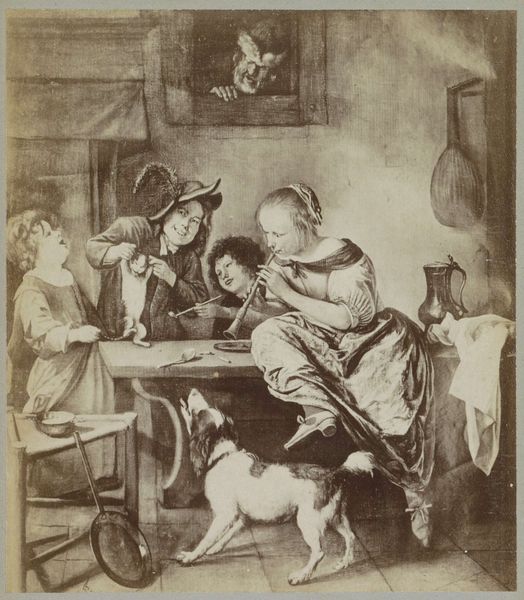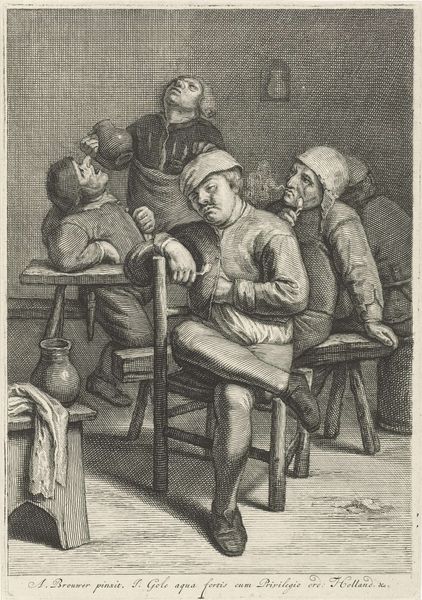
drawing, engraving
#
portrait
#
drawing
#
baroque
#
pencil sketch
#
charcoal drawing
#
pencil drawing
#
portrait drawing
#
genre-painting
#
engraving
Dimensions: height 219 mm, width 158 mm
Copyright: Rijks Museum: Open Domain
Curator: Look at the deep lines of this engraving. We are looking at "Chirurgijn brandt een wond uit," or "Surgeon Cauterizing a Wound," a work created between 1635 and 1692 by Justus van den Nijpoort. Editor: The light and shadow at play create such an intense mood! It's incredibly intimate but also conveys such palpable discomfort and pain, despite being rendered in monochrome. Curator: Absolutely. Consider how this scene situates the surgeon. He is not some detached professional, but a figure deeply embedded in a domestic, communal setting. Notice the woman with her hand placed tenderly on the patient. This work speaks to a broader social context in which care, particularly medical care, existed. The etching becomes not just an image of medical procedure but of the community involved in it. Editor: I'm drawn to the array of symbolic objects – the instruments on the floor, the bowl near the window, even the crutch leaning against the patient. Each one holds significance, referencing healing, pain, and the patient's reliance on others. These elements combine to present a layered narrative of the human condition, the balance of suffering and care in our daily lives. Curator: I see the composition also echoing that intersection of private suffering and communal observation, but on the level of identity, especially through a lens that interrogates accessibility. Editor: Van den Nijpoort certainly offers a window into a specific moment in time, but his art achieves a timeless quality because it explores aspects of universal human experience. I mean, who among us hasn’t felt fear in a doctor’s office? Curator: Exactly. It compels us to ask not only about historical medical practices but about access to care. Editor: For me, this work remains striking as a powerful study of light and shadow interwoven with the timelessness of human vulnerability. Curator: And for me, a critical reminder of the need for accessibility and empathy in all systems of care, then and now.
Comments
No comments
Be the first to comment and join the conversation on the ultimate creative platform.

